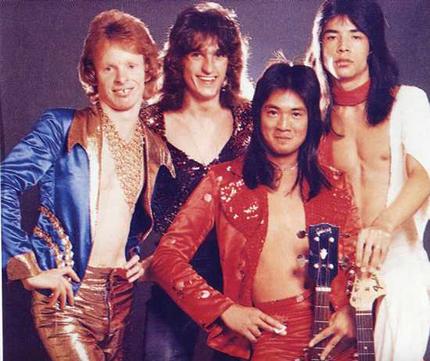
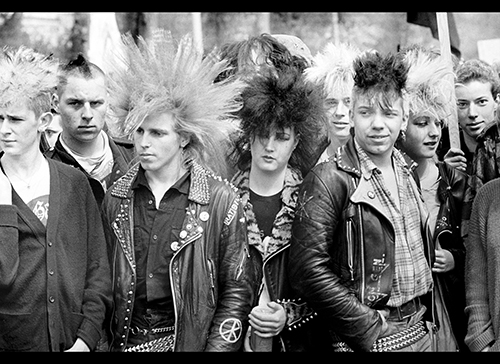
| Punk is not Blink-182, Green Day, Sum 41, or anything prefaced with "pop". Punk is not a fashion style to make people think you are edgy. Punk is not multi-million dollar albums with over produced tracks that are pumped out by major record labels straight into the earholes of top 40 drones. "A capacious definition of punk as no less than a principle of self-determined action and creation in the world, motivated by dissatisfaction with the commercial, consumerist mainstream" is the closest to defining punk as possible (Kreilkamp 27). Punk operates on a wavelength of resistance; "the movement itself has been an intense thirty-year struggle to maintain autonomous cultural spaces" (Barrett 24). A subculture founded from the frustrations of the working class who tired of the misrepresentation of their demographic. Punk is a visual as well as sonic indication of the hopelessness felt by those who do not belong. |

|

|
| Finding its start in the wake of the flashy, flamboyant glam rockers and the intellectual, pretentious progressive rockers of the 1970s, punk was very much a subversive movement that turned away from the excess and abstraction to focus on a more human reality. After a "time when boys looked like girls" and "girls looked like drag queens", the punk aesthetic represented "working classness metaphorically in chains and hollow cheeks, 'dirty' clothing (stained jackets, tarty see-through blouses) and rough and ready diction" (Moyer; Hebdige 63). Through dawning these visual representations of disdain, punks purposefully create distance between themselves and the social norms in place; they choose to wear their philosophy on them, a symbolic opposition towards the glitter-laced rockers that came before them. The movement featured progressive and inclusive attitudes and was known for being "strictly antiracist, antihomophobic, and animal friendly" (Smith 633). Vivienne Westwood, esteemed punk fashion designer, said it eloquently, "We weren't only rejecting the values of the older generation, we were rejecting their taboos as well" (Smee 77). Ironically, the punk scene inevitably became an amalgamation of the corporate interests and shallow, commercialized nature of everything it was built against. In the words of Dead Kennedy's lead singer, Jello Biafra, "Everything becomes family friendly entertainment in time". |
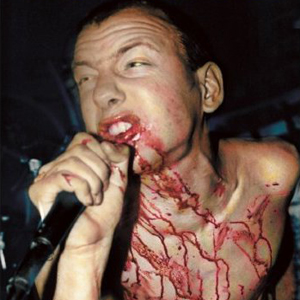
|
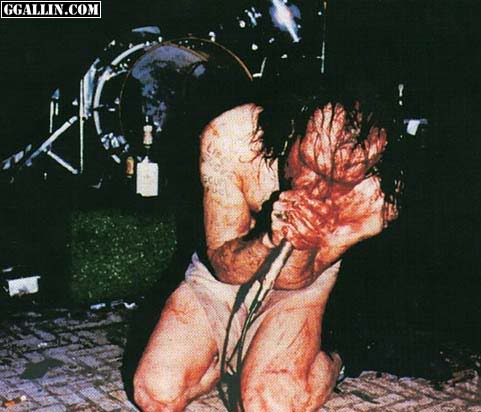
|
| Punk's response to the cooption of their counter culture? Hardcore. By the early 80's, the punk scene, which had originated in the UK, had made its way to the United States and began to fuse with the grit and aggression found in the fast paced American life. The "artsy pretensions... were stripped away in favor of even shorter, speedier songs, leaving only a howl of naked rage and frustration" (Moyer). Not only the music, but also the superfluous costumes of the UK punks, which nearly paralleled that of the glam rockers, was abandoned for casualwear (Jeans and t-shirts). Realistic visions of regular folks who presented themselves in authentic, modest clothing replaced the caricatures of punks with colored, spikey hair, covered leather adorned with tartan and animal print. The scene also pushed for the do-it-yourself (DIY) mentality that serves "as both social activity and an anticapitalist business model" (Dunn 217). Staying true to punk's essence of resistance, the American scene birthed this new aesthetic and sought to carve out their own space in the larger realm of punk, one in which their own unique issues and topics were tackled. Though there are a plethora of fantastic hardcore bands, there are three that have always stuck out to me as the epitome of hardcore: The Dead Kennedys, Bad Brains, and Black Flag. Each band had their own particular niche within the genre, but together offer a quintessential discography that appeals to not only punks but also those outside of the subculture. |

|

|
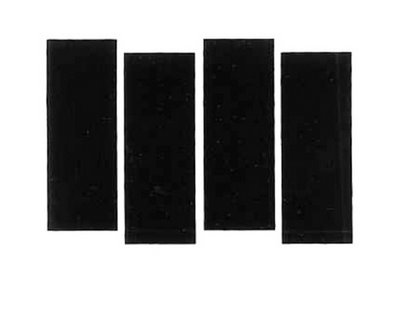
|

|